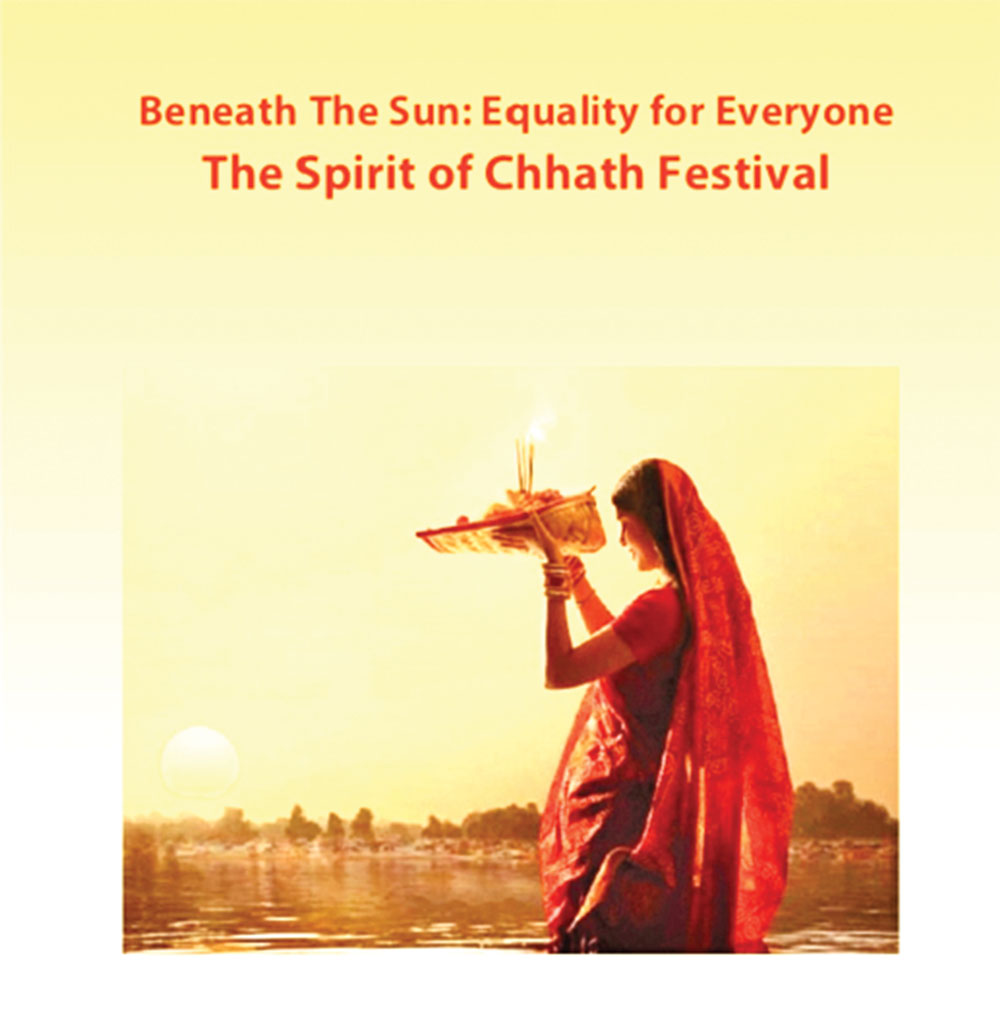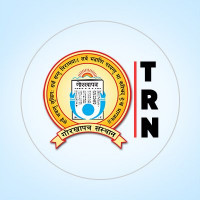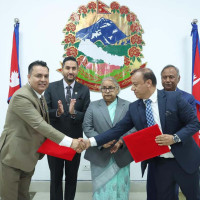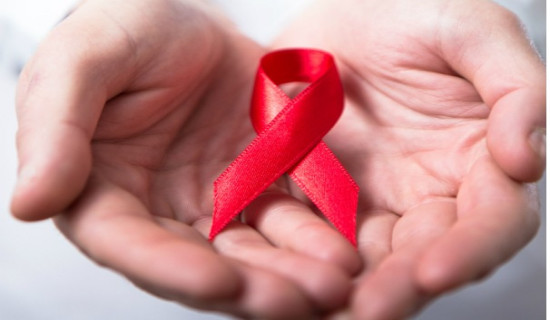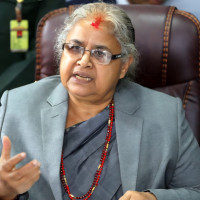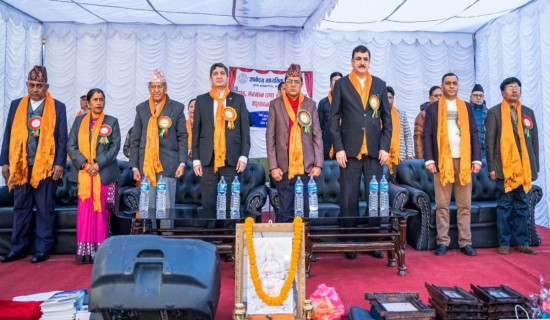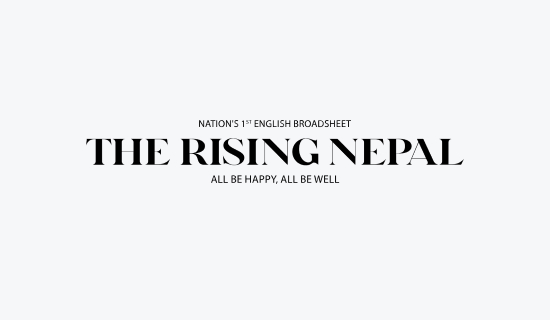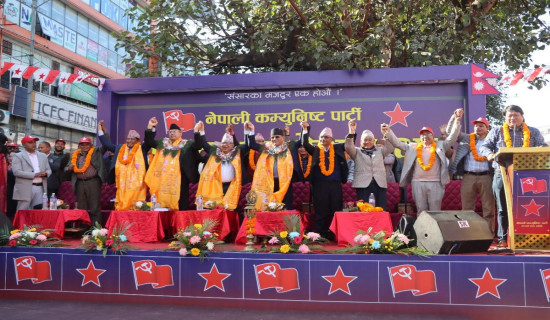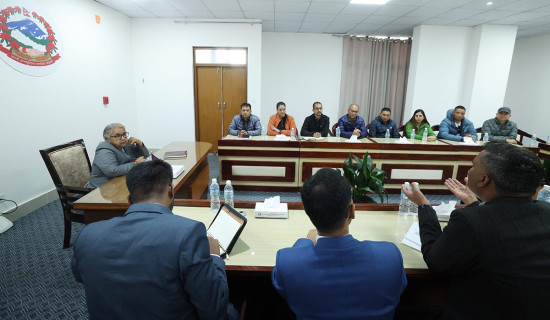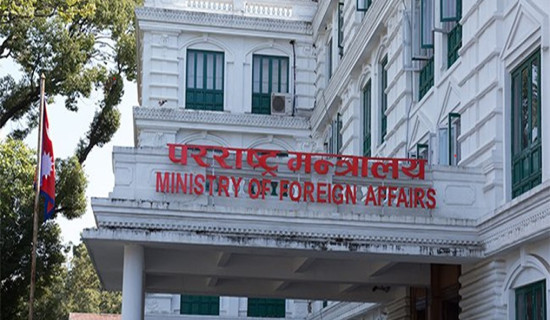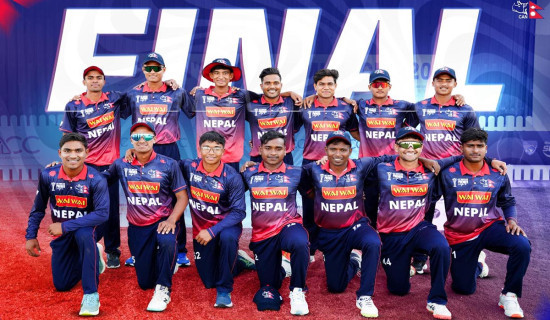- Monday, 1 December 2025
Chhath: Link between spirituality and sustainable development
BY Narayan Prasad Ghimire/RSS
Kathmandu, Oct. 26: A book penned by a researcher Jivesh Jha on the Chhath festival has showed the ties between spiritual awakening and development. The "Beneath the Sun: Equality for Everyone, the Spirit of Chhath Festival" penned by legal scholar Jha highlights the social, economic, environmental and development aspects of Chhath.
The Chhath festival, during which the Sun God is revered, is mainly celebrated in the Mithila region of Nepal, and Bihar and eastern part of Uttar Pradesh, India. Of late, the festival has expanded to hilly regions. Even the Kathmandu Valley observes the festival with fanfare, especially after people's movement of 2062/63.
The author has described how the festival is expanding across the country and even abroad, bearing the essential values of spiritual awakening, austerity, worship of nature, faith, and bond in family and community, and devotion.
From the water bodies to the sun, sanitation to sacredness, conservation to agriculture, local earnings to development goals, the Chhath festival fosters unity, togetherness, harmony, and importantly the equality. Irrespective of class and caste, richness and deprivation, the worshipping of the Sun God together on the banks of rivers, ponds and stream reflects equality. These aspects are vividly presented in the book. He argues that Chhath promotes social cohesion: "It’s the festival which tightens the bonds of equality, fraternity, unity and integrity. Every devotee-rich or middle class-prepares almost similar 'prasad' and other items to offer the Almighty."
The most salient feature of the book is its links of Chhath rituals to the development goals. For example, Jha mentions the pollution free soil and water, cleaning of ponds, rivers and Ghats (where Chhath puja is to be performed); and prayers for the agro-productivity, clean and green environment for sustainable future is linked to SDG 1 (No poverty), SDG 2 (Zero hunger), SDG 3 (Good health, well being), Goal 6 (clean water and sanitation; and Goal 11 (Sustainable Cities). Such links reinforce the reality that our festivals and the way we celebrate these are closely linked to nature and development goals.
The cleanliness of rivers and stream is associated to an environmental protection, thereby building pollution-free atmosphere.
The author also expresses concern over this in this way: "Following these festivities, the government agencies often neglect the responsibility of maintaining water cleanliness throughout the year. It is imperative that the State recognises and implements the concept of the 'Public Trust Doctrine', which mandates that natural resources, including waters and water bodies, are held in trust for the benefit of present and future generation."
Once the paraphernalia and practices maintained during the festival celebration are given continuity, environmental protection and community satiation can be possible.
Next, the book, though a brief text, is enriched with research references from journal articles and media analyses. This technique helps writer convince readers and encourages for further study and research.
The book consists of six chapters, covering all aspects and rituals associated with the festival. The rituals of the five-day (some focus on four days) festival are explained vividly- Maruwa-Machh Barnai; Nahay-Khay; Kharna and Sandhya Arghya, and Usha Arghya.

